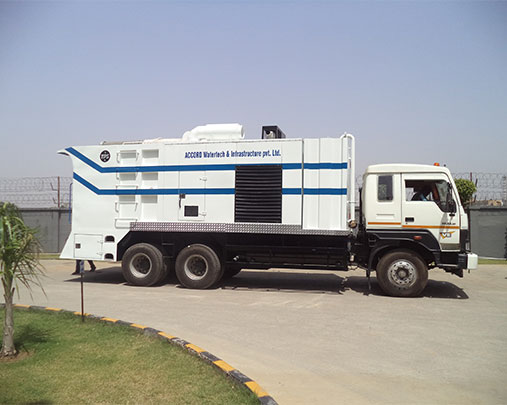In the realm of construction, efficiency and environmental consciousness have become paramount concerns. As industries strive to minimize their ecological footprint while maximizing productivity, innovative technologies such as desilting machines and dust suppression systems have emerged as game-changers. These systems not only streamline construction processes but also contribute to maintaining a cleaner and safer work environment. Let's delve into the significance and workings of these revolutionary tools.
Desilting Machine: Enhancing Water Management
One of the primary challenges in construction projects involving excavation or dredging is managing the accumulated sediment or sludge, commonly referred to as silt. Traditional methods of desilting often involve manual labor and heavy machinery, which can be time-consuming, labor-intensive, and environmentally disruptive.
Enter the machine – a sophisticated piece of equipment designed to efficiently remove silt and sediment from water bodies such as rivers, lakes, or reservoirs. These machines utilize advanced mechanisms such as suction pumps or hydraulic dredgers to extract silt while minimizing disturbance to aquatic ecosystems.
By employing desilting machines, construction projects can significantly enhance water management practices. These machines not only facilitate the extraction of silt but also enable its proper disposal or reuse, thereby mitigating environmental contamination and optimizing resource utilization.
Dust Suppression System: Promoting Health and Safety
Dust emission is a pervasive issue in construction sites, posing health risks to workers and neighbouring communities while contributing to air pollution. Traditional methods of dust control, such as manual watering or chemical sprays, are often inefficient and environmentally detrimental.
The advent of suppression systems has revolutionized dust management in construction sites. These systems employ various techniques such as misting, fogging, or chemical agents to effectively suppress dust particles, keeping them from becoming airborne.
By deploying suppression systems, construction companies can safeguard the health and well-being of workers while adhering to stringent environmental regulations. These systems not only reduce dust-related health hazards but also minimize site cleanup efforts and maintain neighboring areas' air quality.
The Integration Advantage
What sets apart leading construction companies is their adoption of integrated solutions that combine desilting machines and suppression systems. By integrating these technologies seamlessly into their operations, companies can achieve synergistic benefits that enhance productivity, sustainability, and cost-effectiveness.
The synchronized deployment of desilting machines and suppression systems streamlines construction processes, reduces downtime, and minimizes environmental impact. Moreover, it demonstrates a commitment to responsible and eco-friendly practices, which can enhance a company's reputation and competitiveness in the industry.
Conclusion: Pioneering Progress with TPSMFG
In conclusion, the desilting machine and dust suppression system represent pioneering innovations that are reshaping the construction landscape. These technologies not only improve operational efficiency but also prioritize environmental stewardship and worker safety.
As construction companies embrace these advancements, they position themselves as leaders in sustainable development and responsible resource management. Through the integration of desilting machines and dust suppression systems, companies can achieve greater efficiency, profitability, and environmental sustainability. For comprehensive solutions tailored to your construction needs, consider partnering with TPSMFG – your trusted partner in pioneering progress.





Comments